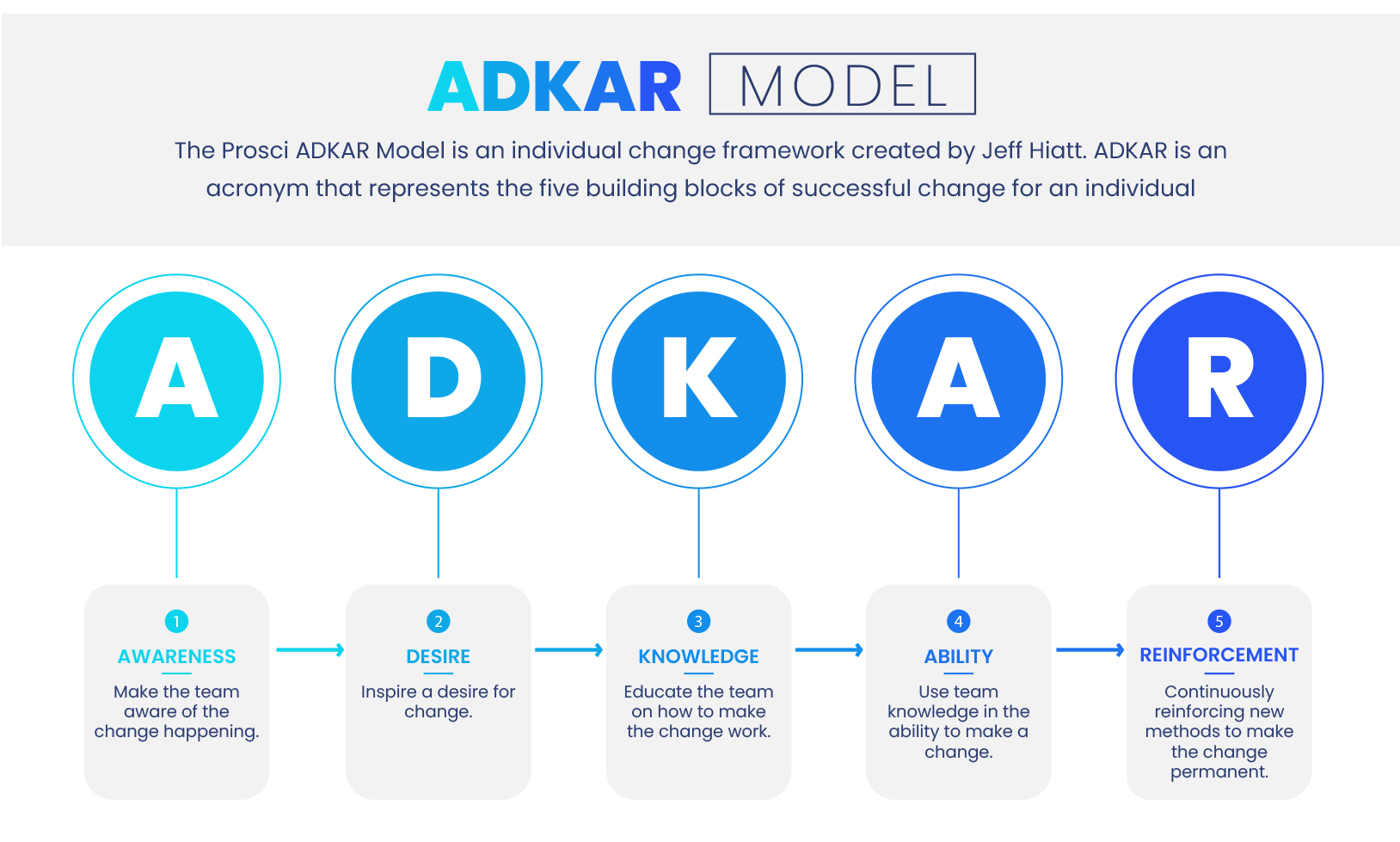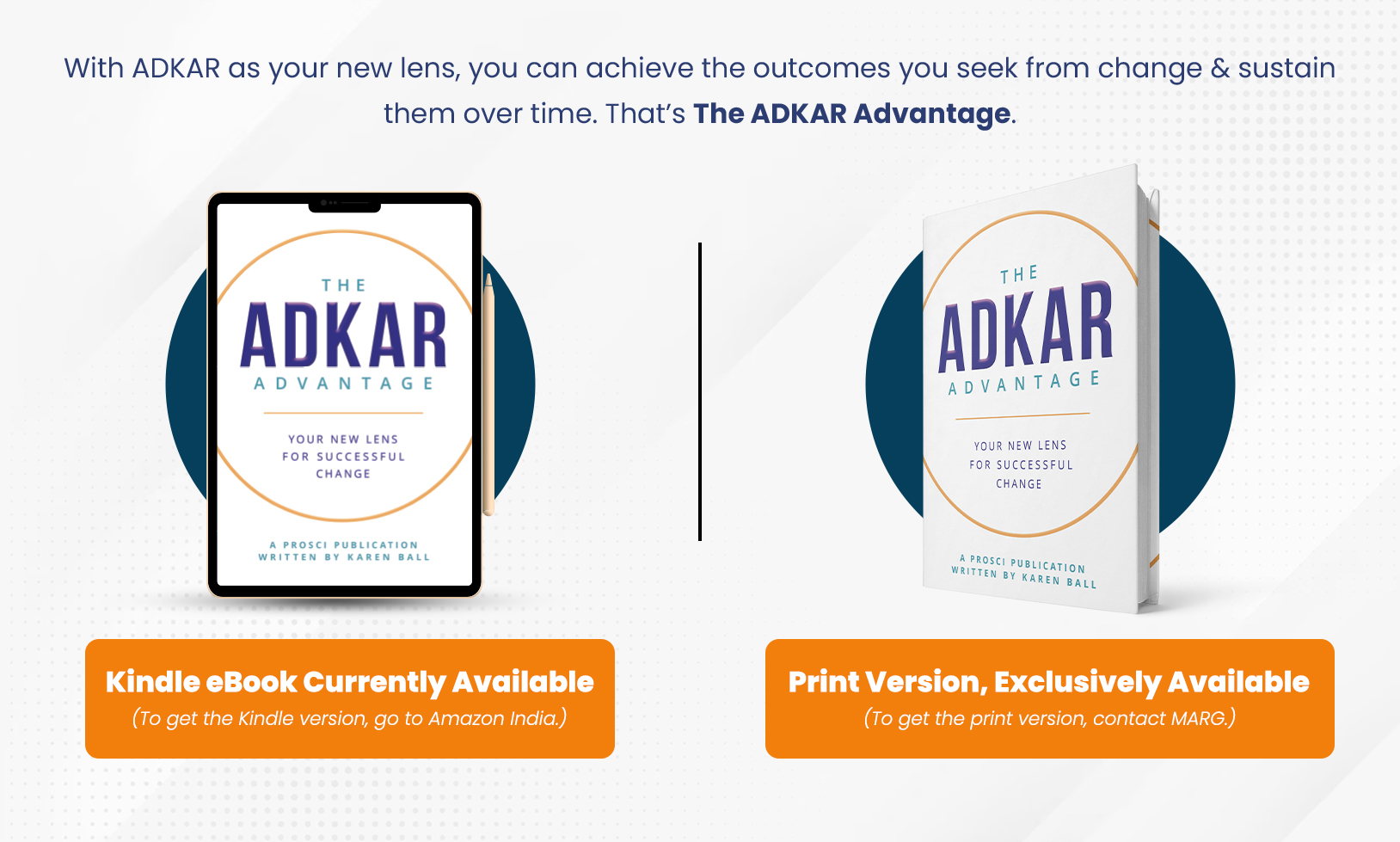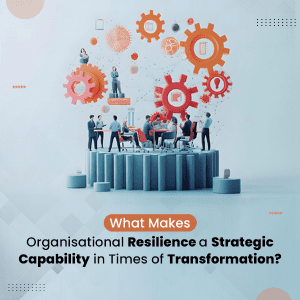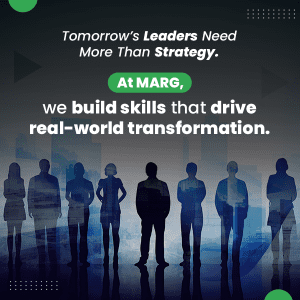
The Prosci ADKAR® Model stands out as a beacon for strategic change management. Developed by Jeff Hiatt, ADKAR—a robust acronym encapsulating Awareness, Desire, Knowledge, Ability, and Reinforcement—serves as a roadmap for facilitating individual change, which is essential for organisational success.
While many frameworks address change at an organisational level, ADKAR zeroes in on the individual. This focus is pivotal: organisational change fails if individuals are not aligned with the process. By breaking down change into quintessential components, ADKAR offers a granular approach to managing transitions, ensuring that each employee understands, embraces, and can effectively contribute to the change.
The Foundation of ADKAR Model
Prosci’s ADKAR Model fundamentally reflects the human experience of change. The model originated from Jeff’s exploration into the reasons behind the effectiveness of change management activities:
- Why do we communicate?
- Why is executive support crucial for change?
- Why do we need to train people?

As these questions were answered, the five core components (Awareness, Desire, Knowledge, Ability, and Reinforcement) of the ADKAR Model were identified. Prosci then conducted extensive research to validate and refine these elements, forming the model as it is used today.
If you’ve observed someone successfully navigating a change, whether in their personal life or at work, you’ve likely witnessed the ADKAR Model in practice. The initial step for anyone making a change is understanding the necessity of that change.
The Strategic Necessity of Individual Focus
- Awareness and Desire: Creating awareness about the necessity of change and fostering a desire to participate are critical first steps. This involves transparent communication and addressing the ‘why’ behind the change.
- Knowledge and Ability: Training and development are key. Employees must not only know what to do differently but also possess the ability to implement these changes. This might involve new skill acquisition or behavioural adjustments.
- Reinforcement: Sustaining change requires ongoing support and reinforcement. Without it, the risk of regression is high. Continuous reinforcement embeds new behaviours into the organisational culture, making the change permanent.
Learning to Use ADKAR Model
The ADKAR Model is straightforward and intuitive, often described as common sense once learned. The acronym is easy to remember, and the five components become second nature through application. In Prosci’s Change Management Certification Program, participants begin by applying the model to a personal change. This approach quickly brings the model to life and solidifies understanding. Once familiar with its application in a personal context, participants can effectively apply ADKAR to workplace changes.
The ADKAR Advantage: A New Lens for Viewing Change

Once you start viewing change through the ADKAR lens, your perspective shifts fundamentally. You begin to see change as a sequence of Awareness, Desire, Knowledge, Ability, and Reinforcement. This new mindset influences how you approach everyday tasks: crafting emails to ensure they foster Awareness, assessing news stories for their underlying Knowledge and Desire components, and breaking down personal changes into the five ADKAR building blocks.
“The ADKAR Advantage,” a new publication by Prosci, delves into practical applications of the model, providing insights and real-world stories. It emphasizes the importance of adopting this new mindset towards change, focusing on essential actions that drive sustainable transformation. By honing in on individual change, leaders can cultivate a more resilient and adaptable organisation.
Wrapping up
The ADKAR Model is not just a tool but a strategic asset in navigating the complexities of business transformation. By ensuring that individual changes align with organisational goals, leaders can drive meaningful and lasting change. Embrace ADKAR to harness the full potential of your team and achieve your transformational objectives.
For a comprehensive guide on implementing ADKAR, buy the kindle version of “The Adkar Advantage” on Amazon or get the print version from Marg Business Transformation.






